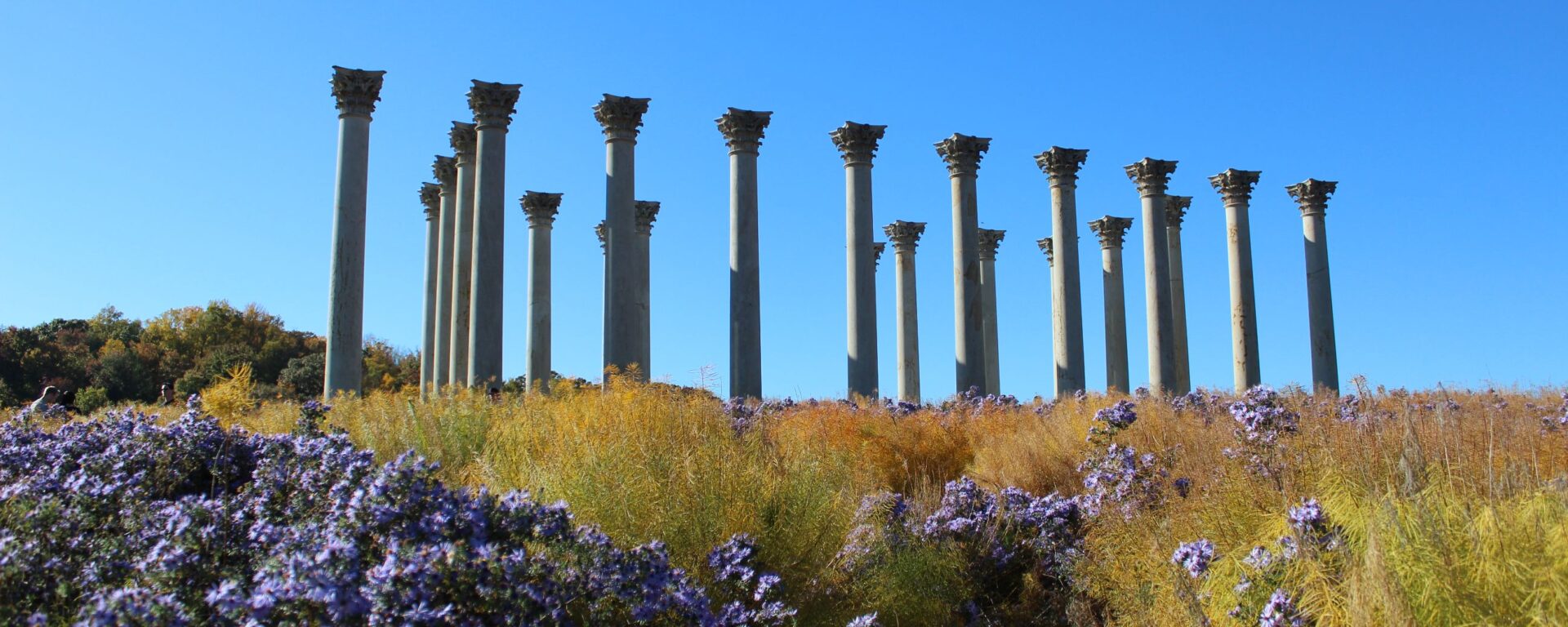“We have built no temple but the Capitol. We consult no common oracle but the Constitution.”
On a grassy hilltop on the grounds of the National Arboretum stand 22 stately Corinthian columns. They originally stood at the East Portico – the covered entrance – to the Capitol building, where they witnessed the inauguration of 27 Presidents. Reminiscent of the ruins of ancient Persepolis or a forgotten Roman temple, they are an elegant reminder of the history of Washington, D.C., and the changes that have shaped the city.

The design of the columns and the East Portico was done by Benjamin Henry Latrobe, the second Architect of the Capitol. They weren’t installed until 1825, when Charles Bulfinch – third Architect of the Capitol – completed the center section of the building. Bulfinch also created the original timber-framed, copper-lined dome of the Capitol.

The Capitol Building was expanded to its current length in the 1850s to accommodate the new legislators from growing and newly admitted states (the number of Representatives wasn’t limited to 435 until 1911). The expansion more than doubled the length of the building, making the dome appear under-proportioned. Bulfinch’s successor – Thomas U. Walter – was responsible for the expansion of the building and was asked to create the current iron dome to be more in line with the proportions of the building.
In 1958 the East Portico was extended over 30 feet and the original sandstone of the portico was replaced with a marble duplicate. The original stones were moved to various locations in the District. The columns were initially moved to the Capitol power plant before being deposited on the banks of the Anacostia River; everything else sits in an unmarked location in Rock Creek Park.

Placed in their current location in the 1980s, the columns were officially dedicated in June 1990 in a ceremony with 1,000 guests, including First Lady Barbara Bush and Secretary of Agriculture Clayton Yeutter. The driving force behind placing the columns in the National Arboretum was philanthropist Ethel Garrett, who began lobbying for their placement in the 1960s. She led a fund drive that secured more than $2 million for the project before her death, at 89, in 1986.
British architect Russell Page selected the site for the columns and designed its layout. He arranged 22 of the original 24 columns in a rectangle at the top of a hill (the other two lie on a hill in the Arboretum) on a foundation of stones that were the original steps on the east front of the Capitol. A fountain in the middle of the columns feeds a rivulet that divides a series of steps that lead down to a reflecting pool below the columns.

The East Portico of the Capitol Building was the location of the inauguration of every President from Andrew Jackson to Jimmy Carter. President Ronald Reagan broke with tradition in 1981 and all inaugurations since his have happened on the West Front of the Capitol. The last inauguration seen by the columns that now stand in the Arboretum was that of Dwight D. Eisenhower in 1953.
Resources used for this article:
https://www.youtube.com/watch?v=jmo-A_8HoOM
https://en.wikipedia.org/wiki/National_Capitol_Columns
http://www.usna.usda.gov/Gardens/collections/columns.html
https://dcbikeblogger.wordpress.com/tag/national-capitol-columns/
http://www.nytimes.com/1990/06/21/garden/22-pillars-of-the-capitol-now-crown-a-hill.html
